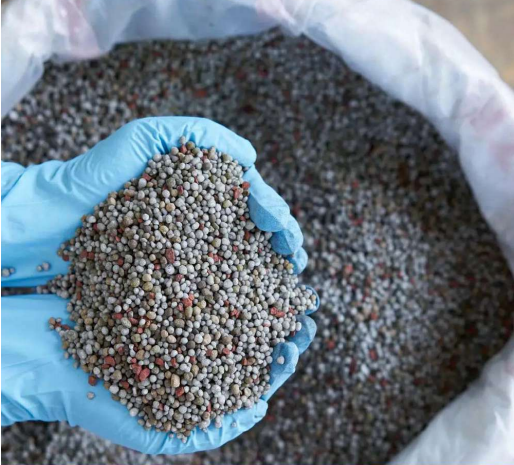Want to Subscribe?
Read Corporate India and add to your Business Intelligence

![]() Unlock Unlimited Access
Unlock Unlimited Access

Editorial
The government’s Rs 2,000 bank note fiat has shocked and surprised one and all. Just over six years ago, after announcing the demonetisation of Rs 500 and Rs 1,000 currency notes in 2016 with the ostensible objective of ridding the economy of black money, corruption, tax evasion and related illegal activities like printing and spreading of counterfeit notes, the Modi government introduced Rs 2,000 currency notes with the primary objective of quickly remonetising the economy. However, even an ordinary, unlettered villager would know that if Rs 500 and Rs 1,000 bank notes can lead to corruption, augment black money and facilitate printing of counterfeit notes, Rs 2,000 currency notes can achieve the same ‘objectives’ with twice the speed!
In fact, after introducing Rs 2,000 bank notes in 2016, the Reserve Bank had stopped printing them from fiscal 2018-19 and had started withdrawing the notes from circulation. Thus, by the first half of 2023, out of over Rs 8 lakh crore, only Rs 3.62 lakh crore of Rs 2,000 bank notes have remained in the economy. Why then are these notes being withdrawn just six short years after introducing them? In other words, the RBI has realized that the issue of Rs. 2000 notes was a blunder by itself.
The reason put forward by the Modi government’s representative in Mint House, Shashikanta Das, RBI Governor, is that these notes are being withdrawn under the ‘clean note’ policy. The objective of the RBI’s ‘clean note’ policy, introduced in 1999, is to provide good-quality currency notes by withdrawing soiled notes from circulation. The RBI Governor’s explanation is ridiculous. No one would buy the argument that Rs 2000 notes can get soiled and become useless within just five to six years. Even the Reserve Bank itself agrees that Rs 2000 notes are not commonly used for transactions. In fact, small denomination notes of the value of Rs 1, 5, 50 and 100 are widely used for transactions and as they have been used for years together, there are more chances of them getting soiled and needing to be withdrawn. Will the government dare to withdraw these small denomination notes from circulation? Hence, the real reason for withdrawing Rs 2,000 bank notes will remain a secret. And as is his wont, the Prime Minister will maintain a stony silence on the issue.
We are afraid this is a Tughlaqian step. In the mid-thirteenth century, the then Sultan, Mohammed bin Tughlaq, had ordered his capital shifted from Delhi to Doulatabad and had peremptorily told the residents of Delhi to shift to the new capital. Needless to say, this ‘firman’ had led to a lot of chaos, confusion and harassment of people. The Sultan would not listen to anybody’s advice and did exactly as he pleased. Tughlaq’s own ‘Man Ki Baat’ proved a futile exercise and he had to subsequently withdraw the order to shift the capital. All those centuries later, the Modi government’s decision on Rs 2,000 bank notes belongs to this Tughlaqi genre!
Interestingly, the RBI has fixed September 30, 2023 as the deadline for exchange of Rs 2,000 notes. But, contradictorily, at the same time it has announced that even after September 30 these notes will continue to be legal tender. This means that even after September 30, the Rs 2,000 notes can be exchanged with the ‘official blessings’ of the authorities.
The government conceives such Tughlaqian ideas and enthusiastically implements them without the least concern for the harassment and pain the public goes through while conforming to such diktats.
Cover story

Poison of one economy is another economy’s meat! Shrinking global supplies of fertilisers due mainly to the Russia-Ukraine conflict have meant that Indian fertilizer manufacturers have had to step up to the plate and meet the increasing demands of Indian farmers.
Investment Advice
Aditya Birla Capital’s (ABCL) lending businesses have shown an accelerated growth momentum (+40% YoY) on the back of a simultaneous build-up in the quality of the balance sheet (67% of the NBFC’s AUM is towards Retail + SME + HNI, while 41% of the HFC’s AUM is towards affordable loans) and a substantial improvement in asset quality.
Fortune Scrip
For this fortnight we have selected a company as the Fortune Scrip which is not only doing very well but has tremendous growth prospects going ahead. It is Nagpur-headquartered multinational Solar Industries which is engaged in the manufacture of industrial explosives and explosive initiating systems with a capacity of 330,000 metric tonnes per year (mtpa). It is the largest company of its kind in India, enjoying a hefty marketshare of 30 per cent.
News and Events
It was a unique gathering organized by Healthfarm, a leading health and wellness corporate entity, to welcome and honour four-time Mr Olympia, Chris ‘Cbum’ Bumstead, and the Raw Nutrition team of the US to India for the first time. Raw Nutrition is the collaborator of Healthfarm.
Corporate Feature
Abans Holdings Limited, a leading diversified financial services company, announced a strong financial performance for the fourth quarter as well as for fiscal year 2023. The company showcased significant growth across various financial metrics, reinforcing its position as a key player in the industry.
Business Management
Sustainable business practices improve the bottomline of a company and HR managers leverage their efforts in creating an environment where the talent of the company is retained to work in harmony with sustainable business strategies. As Dr Naveen Malhotra points out, companies are now mindful of their economic, environmental and social impact.

February 15, 2025 - First Issue

Industry Review

Want to Subscribe?
Read Corporate India and add to your Business Intelligence

![]() Unlock Unlimited Access
Unlock Unlimited Access
Lighter Vein

Popular Stories
Archives
